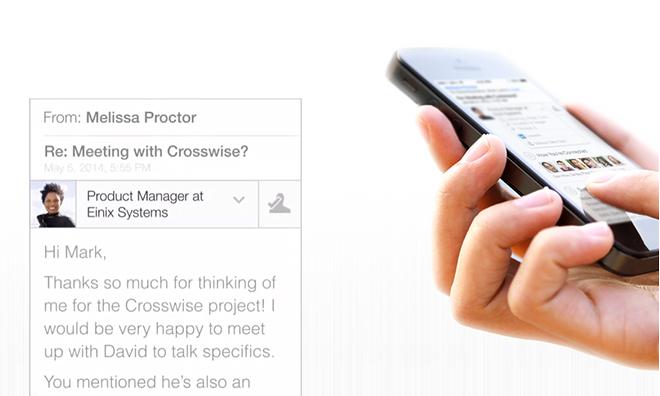Networking site LinkedIn on Wednesday unveiled a new iPhone-only service called Intro, which allows iOS users to receive email messages that include an embedded profile of the sender's LinkedIn information.
According to LinkedIn, Intro's embedded profile bar grants users easy access to a sender's information, including picture, company and position, which reportedly facilitates "more effective" responses. The bar is interactive, with a drop-down menu offering a deeper look at the users' LinkedIn profiles, as well as a button to quickly request a connection.
Because Apple does not allow third-party companies control of its Mail app, including plug-ins, developers have taken to creating standalone mail apps. Intro, however, is not an add-on, but instead an integrated service that attaches to a user's email account, thus allowing LinkedIn to insert the profile bar at the top of messages from other registered users.
When signing up for the service, users must grant LinkedIn access to their email account. As noted by TechHive, LinkedIn is leveraging technology created by startup Rapportive, which the company purchased last year.
In LinkedIn's implementation, messages are scanned, and if an email account match is found in the service's database, the corresponding information is inserted into the incoming email. To work, a user's email address must be registered with their LinkedIn account, and cannot be from a an organization (such as .org addresses). Messages must also be less than 128Kb to process.
Intro also requires users install a new profile in iOS that will allow functionality with the Mail app, allowing for user to create a new account not associated with Apple's defaults. The profile can be deleted if a user decides to stop using the service.
Currently, Intro supports iCloud, Gmail, Yahoo! Mail, AOL Mail and Google Apps.
LinkedIn's latest offering may be useful to some, but the implementation does raise security concerns. Most notably, a user's email correspondence must filter through two separate servers. Intro fetches messages from a main account, like iCloud, scans and attaches the appropriate LinkedIn data, then sends it to a user's iPhone.
The company notes in its Pledge of Privacy, however, that no information will be shared with outside parties and all private information will be kept confidential.
To take advantage of the free service, LinkedIn users can visit the dedicated Intro website to initiate the registration process.


